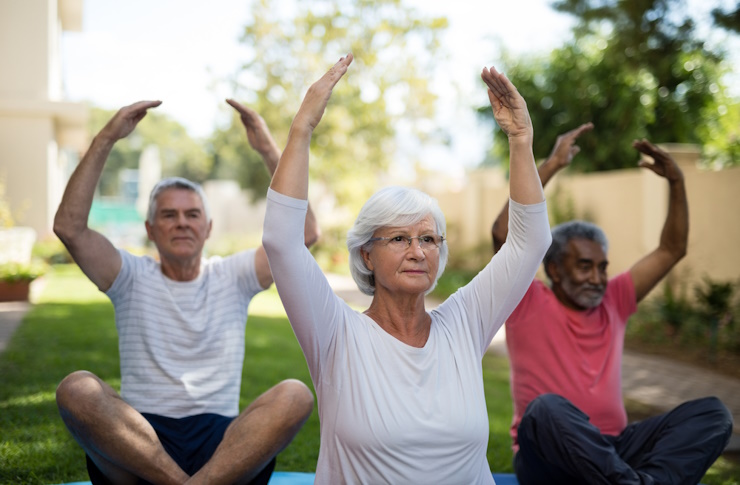Senior Living Guide: Choices, Care & Amenities
Discover practical guidance on senior living options, from independent retirement communities to assisted and memory care. This comprehensive guide covers housing types, accessibility features, amenities, social programs, and key factors to evaluate when choosing a community. Learn how dining, on-site or partnered healthcare, safety systems, and social activities combine to support seniors' independence and well-being.

Introduction Senior living communities are designed to support older adults who want a blend of independence, convenience, and assistance. Most communities set minimum ages around 55, though requirements can differ. They frequently provide communal services like dining, housekeeping, transportation, social programming, and either on-site medical support or formal relationships with nearby healthcare providers to ensure residents’ needs are met.
Types of accommodations Retirement communities offer a range of housing styles to suit different preferences and budgets. One common option is the two-bedroom apartment, which gives residents more room and a feeling closer to a traditional home while downsizing. Typical features found in these units include: - Open floor plans that improve mobility and sightlines - Full kitchens or compact kitchenettes for meal preparation - Bathrooms equipped with safety upgrades - Living rooms for hosting family and friends - Ample storage to hold personal items
Alongside two-bedroom units, many communities provide studios, one-bedroom apartments, and cottage-style homes or villas. This variety helps seniors select a layout that matches their lifestyle and financial plan.
Accessibility and universal design Creating a safe, navigable environment is central to senior residences. Many communities follow universal design principles so spaces work well for people of diverse abilities. Common accessibility features include: - Wider doorways and hallways for walkers and wheelchairs - Lever handles in place of traditional knobs - Low-threshold entries and roll-in or zero-step showers - Strategically placed grab bars in bathrooms and other areas - Emergency call systems in private units and shared spaces - Elevators in multi-level buildings - Outdoor ramps and continuous handrails
These elements not only reduce accident risk but also help residents live more independently.
Amenities and services Senior living communities aim to foster comfort, convenience, and engagement. Typical offerings include: - Multiple dining choices, from casual cafes to formal dining rooms - Fitness centers and exercise classes tailored to older adults - Libraries and technology or computer rooms - Arts and crafts studios and maker spaces - Game rooms, lounges, and social gathering areas - Landscaped gardens, courtyards, and walking paths - Transportation for shopping, appointments, and excursions - Regular housekeeping and laundry assistance - 24-hour security and rapid response systems - On-site medical services or established partnerships with local healthcare providers
These services are intended to support day-to-day living while encouraging an active, fulfilling lifestyle.
Building social connections Social interaction is vital for mental and emotional health in later life. Communities typically design varied programs to help residents form friendships and stay engaged, such as: - Organized group trips to cultural and recreational sites - Continuing education classes and lecture series - Special interest clubs and hobby groups - Movie nights, card games, and tournaments - Seasonal events, holiday parties, and themed celebrations - Volunteer projects within and beyond the community - Intergenerational initiatives involving local schools or youth groups - Group fitness classes and wellness programs - Regular religious services or spiritual gatherings - Resident councils and committees that shape community life
These activities provide enjoyment and meaningful opportunities to connect with peers.
Choosing the right community Picking a senior living community is a significant decision that should be informed and deliberate. Important factors to evaluate include: - Location relative to family, friends, and preferred services - Levels of care available, such as independent living, assisted living, or memory care - Quality and variety of floor plans and accommodations - Breadth of amenities and support services - Staff training, credentials, and resident-to-staff ratios - Safety measures and emergency preparedness - Meal options and dining plans - Social programming and opportunities for engagement - On-site healthcare capabilities and external provider relationships - Costs, contract terms, and available payment choices
Visiting multiple communities, talking with current residents and staff, and reviewing contracts carefully are all essential steps. Many communities offer short trial stays so prospective residents can experience daily life before committing.
Conclusion Senior living communities provide a spectrum of housing types, thoughtful accessibility features, extensive amenities, and a variety of social programs to meet the changing needs of older adults. By weighing personal priorities—location, level of care, services offered, staff qualifications, and cost—seniors and their families can find a community that balances independence, safety, and social connection.






